In Remembrance: Michael Aris
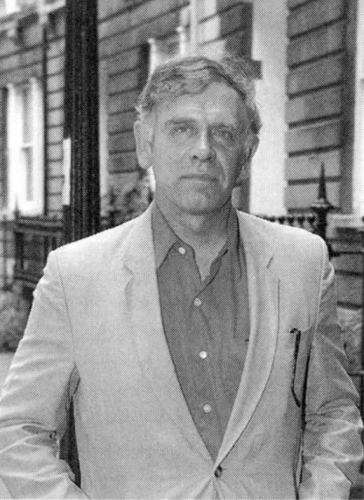
Dr. Michael V. Aris, the husband of Burmese opposition leader and Nobel laureate Aung San Suu Kyi, died of prostate cancer in London on March 27, his 53rd birthday.
Dr. Aris earned his Ph.D. in Tibetan Literature in 1978 and was a leading authority on Bhutanese, Tibetan, and Himalayan cultures. He held various academic positions at Oxford University, Harvard, and other institutions and from 1967 to 1973 was private tutor to the Royal Family of Bhutan. During the last stages of his illness, he had made several applications to the Burmese government for permission for a last visit with his wife, but these were denied.
Suu Kyi met Aris in London in the early 1970s while studying at the London School for Oriental Studies and working for the United Nations. They were married in 1972 and have two sons, Alexander and Kim. Suu Kyi, the daughter of independence hero Aung San, returned to Burma in 1988 to care for her dying mother and emerged as head of the pro-democracy movement. Her NLD (National League for Democracy) party won a landslide victory in the 1990 elections, which the military still has not recognized. She has spent most of the years since under house arrest, and her husband and sons accepted the Nobel Peace Prize in 1991 on her behalf. During her husband’s illness and when he died, Suu Kyi declined the government’s offers for her to travel to England, fearing that it would not allow her safe return to Burma.
A Buddhist ceremony for Aris was held at Suu Kyi’s home seven days after his death. More than 1,000 people attended, including diplomats from the U.S. and Europe. In a statement of appreciation for all who had supported her husband and family during his illness, Suu Kyi said, “I have been so fortunate to have such a wonderful husband, who had always given me the understanding I needed. Nothing can take that from me.”
Image: Courtesy of AP/ Wide World Photos.
A Tree Grows
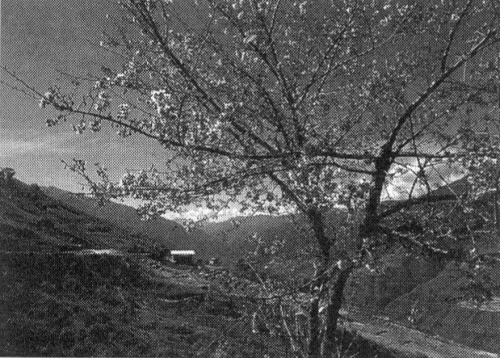
In Bhutan, a kingdom is worth its trees. Earlier this year, Bhutan passed regulations making its government the greenest in the world: Not one single tree – on public or private land – can be cut without approval. More than one-quarter of Bhutan has been set aside as national parkland. Logging is permitted on less than five percent of the land. And, most drastic of all, there is a ban on the export of all unfinished timber as of January 1.
To the Bhutanese (a mostly rural population of 600,000 in a country the size of Switzerland), these regulations simply protect an ancient way of life in this legendary abode of the gods. The country’s beauty, in great part, is derived from its sweeping Himalayan peaks and the vast forests that cover nearly three-quarters of the land. Bhutan’s reverence for the land is quite different from its neighbors on either side, China and India, where forests have been stripped. In India, forest cover has now dwindled to nineteen percent.
Bhutan’s king, Jigme Singye Wangchuck, strongly supports the new regulations, even if they potentially threaten the economic stability of the Bhutanese, who are among the poorest people in the world.
Perhaps it is no coincidence that the New York Times reported another Bhutanese regulation that had gone into effect on January 1: For the first time, Bhutan’s workers now have to pay a tax of 5 to 30 percent if they earn more than $100 per month. The higher bracket begins on earnings of more than $1,000 per month. Previously, Bhutan relied on corporate taxes, dividends, and revenue from its major industries of mining, energy, and tourism, as well as millions of dollars in foreign aid. The aim of the new taxes is to make the country self-sufficient.
Image: Bhutan, the green kingdom. Photo by Nicholas Reuss.
On the Move
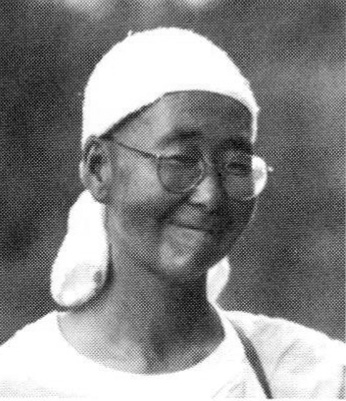
The Myohoji are on the march again. Since last May, members of the Nipponzan Myohoji, a Nichiren Buddhist sect that builds Peace Pagodas around the world, have been on a pilgrimage to bear witness to the millions of Africans transported to the Americas in the slave trade. Their pilgrimage inspired the month-long march for prison reform this past spring.
On March 15, Sister Jun Yasuda and an interfaith group started on foot from the Grafton Peace Pagoda in Petersburg, N.Y. In mid-April they rallied at the United Nations, fasted, and met with the UN’s Human Rights Commissioner. In between, they walked more than 350 miles, visited 23 prisons, spoke with prisoners and prison officials, and prayed for an end to capital punishment and institutional racism in the justice system.
Janice Young, a supporter of the Myohoji temple in Petersburg, spoke with Tricycle: “In examining the civil rights and racial situations in America during the Interfaith Pilgrimage of the Middle Passage, it became clear that our prisons are being unfairly filled with minorities. . . . The main point of the march is to offer a prayer for the abolition of the death penalty. It’s about asking the question, ‘What kind of society do we really want—do we want to put people away and forget about them, or do we want to give people a chance to change?’ It demonstrates Buddhist principles by recognizing that we’re all connected and that we should look at the consequences of the whole system. [The death penalty and the prison system] operate on a fear-based approach, and that’s not a healthy attitude from a Buddhist perspective.”
Social engagement by monks is spreading throughout Asia, too—and not only with protests:
- In South Korea Hae Jin, a Buddhist monk, is the director of the Historical Museum of Japanese Military Sexual Slavery and conducts tours in the museum, located southeast of Seoul. Among the exhibits are a reconstructed brothel and military-issued condoms.
- A Buddhist monk from Taiwan, Wu Hung, was honored by the ASPCA in New York. He received its Founders Award for his activism in the Taiwanese government to reduce the suffering of millions of stray animals.
- In Vietnam, a prominent dissident, the Buddhist monk Thich Quang Do, had been reportedly arrested in late March, according to the Associated Press. Do, 70, is secretary general of the Unified Buddhist Church of Vietnam, which is not legally recognized by the government. Do opposes the state-sanctioned Vietnam Buddhist Church and has spent much of the last 20 years in detention or under house arrest. His whereabouts were unknown at the time of the report, which was issued by the France-based Vietnam Committee on Human Rights. Do’s arrest could not be independently verified, and Vietnam’s Foreign Ministry said it had no knowledge of it.
- In India, a group of Buddhist monks marched for peace on the border of India and Pakistan in the northern state of Punjab. Their demonstration took place along a 22-mile stretch that Indian Prime Minister Atal Behari Vajpayee took en route to meeting with his Pakistani counterpart, Nawaz Sharif. Their demonstration in India was part of an International Pilgrimage for a War-Free 21st Century, which began in Moscow last year. In India the demonstration acknowledged Vajpayee as a man of peace.
- The Sri Lankan polls—and electoral system—were protested by hundreds of Buddhist monks there. The saffron-robed monks wanted a repeal of a Northwestern Provincial Council poll that had been marked by violence, the creation of an independent election commission, and the abolishment of the current electoral system. The ruling People’s Alliance coalition denied the monks’ charges, but President Chandrika Kumaratunga appointed a committee to look into the charges.
Image: Yasuda. Photo courtesy of Grafton Peace Pagoda.
Viva Cepeda
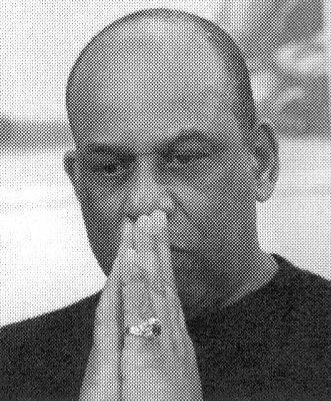
Miles Davis and John Coltrane made up a song for him called “Viva Cepeda,” on the spot, back in 1958. It happened on the night that Orlando Cepeda, the great first baseman for the San Francisco Giants, walked into the nightclub where the jazz giants were performing. Forty years later, Cepeda enjoyed an even bigger salute—he joined Roberto Clemente as the only Puerto Ricans in baseball’s Hall of Fame. Chances are, he’s the only Buddhist ballplayer there, too.
The Hall of Fame honor in March didn’t come easy and capped years of campaigning by the Giants to have him installed. In 1975, Cepeda had been arrested for attempting to smuggle marijuana into Puerto Rico. He was sentenced to five years and spent 10 months in a Florida prison. After his imprisonment, Cepeda turned to Soka Gakkai Buddhism, crediting it with helping him to deal with earlier disappointments in Hall of Fame voting. When he finally made it in, he said, “Today is the day that proves the validity of Buddhism, the validity of friendship.” The speakers blared “Viva Cepeda” when the announcement was made.
Image: Cepeda. Photo courtesy of AP/Wide World Photos.
Official Lessons in Atheism
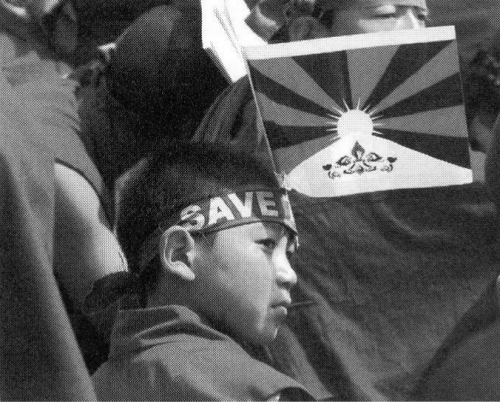
In early February, the Chinese authorities began giving lessons in atheism to the Tibetan population. As part of a series of tough-line measures designed to diffuse the idea of religious tolerance, the Chinese were attempting to preempt the impact of protests they foresaw on March 10, the 40th anniversary of the Tibetan revolt against Chinese rule. The government also initiated a widespread crackdown on dissidents, writers, and the media throughout China.
The Chinese concerns were realized in two major cities in India on the day of the anniversary. In Dharamsala, an estimated 4,000 people protested, the Dalai Lama spoke, and protestors burned an effigy of China’s President. In Delhi, more than 1000 women demonstrated to mark the 40th anniversary of the Tibetan Women’s National Uprising Day.
Image: Tibetan protestors on March 10, 1999. Photo courtesy of AP/Wide World Photos.
Dana by Law
A fundraiser for a Buddhist temple in California knew she was soliciting illegal campaign contributions for the 1996 Clinton-Gore campaign, according to an argument presented by a federal prosecutor. Justice Department lawyer Elizabeth Collery argued that Maria Hsia did not deserve protection from the First Amendment. At issue was $65,000 in contributions from the Hsi Lai Temple in Los Angeles.
In Bangkok, heroin was the issue for an elderly Buddhist monk who was arrested with a traveling companion for trafficking almost eight pounds of the illegal substance. A police officer told Reuters that five packs of heroin were found in a bag carried by the monk, and another five packs were found in a box on his companion’s lap. The heroin was discovered during a routine check on a Bangkok-bound bus north of the city. The monk admitted that he had been paid $2,600 by an unidentified man to take the heroin to Bangkok and that he needed money to renovate a temple in a town in western Thailand. Convicted heroin traffickers can be sentenced to death in Thailand, but such sentences are usually commuted to life imprisonment.
A Walk on the Right Side
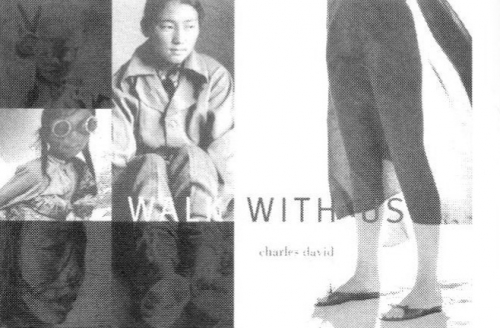
Upscale footwear manufacturer Charles David is taking a big step to raise awareness—and funds—for a Buddhist cause. This spring, the California-based company launched a $1 million print ad campaign to aid Tibet in major magazines like George and Elle. Called “Walk With Us,” separate full-page ads picture the 11th Panchen Lama, who disappeared in 1995 and Ngawang Choephel, Fulbright scholar at Middlebury College, another political prisoner. The ads’ goal: To garner one million names asking for their release to present to U.S. and Chinese governments. Signatures are being gathered on two websites: www.savetibet.org and www.charlesdavid.org. The International Campaign for Tibet, partner with the company, helped designate Tibetan organizations to receive proceeds from fundraising events being held throughout the year.
One of the hottest is a website auction featuring khatas (www.charlesdavid.org) signed by luminaries such as Leonardo DiCaprio, Brad Pitt, and Adam Yauch, each of whom designates which Tibetan charity will benefit. Proceeds from Billy Zane’s and Harrison Ford’s khatas went to New York’s Tibet House, for instance, according to Rachel Taylor, marketing director of Charles David. Taylor, who also conceived the campaign, said, “No one at the company is Buddhist. But we’ve been wanting to do something for human rights for a while. When I saw Kundun, I realized so few people know about what was going on in Tibet. That inspired me, and the company said yes.” Other fundraising events will include walks, auctions of celebrity items, plus proceeds from a portion of Charles David sales in stores—either a week’s or a month’s sales, still to be determined at press time.
Image: Walk With Us. Photo courtesy of Charles David.
High Stakes for Bird Lovers
Yuppie guru Frederick P. Lenz 3d, also known as Zen Master Rama, who committed suicide last year in Long Island, left an estate valued at $18 million, and the National Audubon Society wants it. The author of Surfing the Himalayas and Snowboarding to Nirvana stirred controversy when he was alive – many questioned his authenticity as a Buddhist teacher as he amassed a fortune through sales of his books and fees collected for his lectures on meditation and other subjects. His will has stirred a controversy with even higher stakes.
At issue: Lenz’s 1994 will, which states that his family was to be disinherited, all of his pets were to be killed, and his riches were to go to a foundation to promote his ideas unless he had taken “significant steps” prior to his death to establish such a foundation. If not, the National Audubon Society should be the recipient. The executor of the estate, Norman Marcus, claimed that the money should go to the Frederick P. Lenz 3d Foundation for American Buddhism. Marcus established the foundation and named himself president of it after Lenz’s death.
In a vigorous court battle, the society is calling Lenz a charlatan whose claim to Buddhism was a sham and insisted that it should receive the entire estate. The estate argued that Lenz had initiated such steps to create a foundation. The New York Times reported that the society’s counter, argument noted that “the world would be better off if the money went to the society.” It’s an interesting argument, which, if successful, would give the society an amount equal to more than one third of its annual budget. To prove their assertions, the society’s lawyers presented a three-inch-thick book of negative clippings about Lenz. By April, the estate was still being surfed and bird lovers were holding their breaths.
His Holiness the Dalai Lama Returns to New York
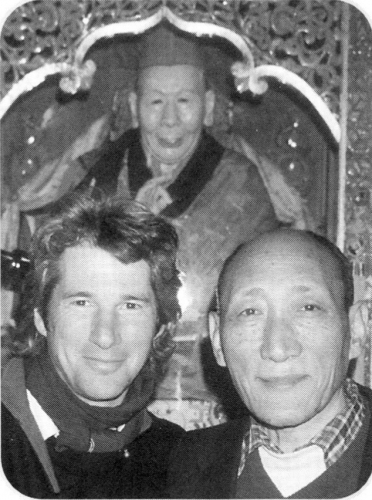
Khyongla Rato Rinpoche, of The Tibet Center, and Richard Gere, who are co-sponsoring His Holiness’s visit this August, speak to Tricycleabout Kamalasila’s Stages of Meditation—and why this text has been chosen for His Holiness to teach.
Khyongla Rato Rinpoche: Kamalasila was the most important student of the great eigth-century Indian saint and scholar Shantirakshita, who founded the monastic tradition in Tibet. Shantirakshita had informed King Trisong Detsen that, in the future, wrong teachings might make their way to Tibet but that his student Kamalasila, could be invited to clarify misconceptions that might develop. At this time, a Chinese master made his way to Tibet and started teaching that one did not need to go to a temple, or to proactice, and that meditation was a process of not thinking about anything. Because of this, many people actually stopped going to temples, stoped their devotional and formal practices of Buddhism. Then the king remembered what Shantirakshita had said and invited Kamalasila to Tibet. A great debate was held before the king between Kamalasila and his students and the Chinese master and his students. The Chinese master was against any form of thought, so contemplating or analyzing emptiness would be wrong. He said that in the sky, if there are clouds, whether they are black clouds or white clouds, they obscure the sun. In the same way, if we are chained by a golden chain or by a metal chain, we are nonetheless chained. He was a great scholar, and in order to support his position he quoted eighty different sutras. By Kamalasila presented sutras that very clearly taught the importance of analytical meditation. And when he quoted these, the Chinese master said, “I do not believe these to be the teachings of the Buddha.” The Chinese master lost the debate and the king announced that he had to leave the country. The king then requested that Kamalasila write Stages of Meditation. Anyone interested in Buddhism would want to know how to go about practicing the Buddhism that is taught here.
What inspired you to select this teaching?
Gere: We had requested an emptiness teaching. His Holiness chose this because while it encompasses an emptiness teaching, it also has the capacity to be more effective and stimulating for a general audience where many people are new to Buddhism. The special quality of this teaching is that it’s a nuts-and-bolts compendium of how to do meditation.
Rato Rinpoche: Many people engage in meditation, and this is one of the most important meditation manuals for establishing the importance of analytical meditation. Also, it is repspected by all schools of Tibetan Buddhism. Without applying analysis we cannot change our regular way of thinking about something. We have to analyze, to scrutinize, and establish the qualities of the Buddha in order to have faith in the Buddha. It should be as a result of that analysis that our faith develops. In order to change the mind and to have that mindset be stable, it must be established by valid reasoning.
Can you tell us something about the stages?
Rato Rinpoche: One should establish first of all whether a path is valid and secondly how to proceed along that path. Within these teachings of the Buddha you have two aspects: method and wisdom. The method side is the development of great compassion and bodhicitta, mind of enlightenment. The generation of bodhicitta is done by means of analytical meditation. The other side, the wisdom aspect, the realization of emptiness, is also done by analytical meditation. Both single-pointed meditation and analytical meditation are important. For example, when developing calm-abiding mind one must engage in fixation—or one-pointed—meditation. However, there are times in the development of calm-abiding—single-pointed concentration—when the mind becomes lax or when it becomes excited. One should then engage in analytical meditation as an antidote to these obstacles in the development of calm-abiding mind, though not simultaneously with single-pointed meditation.
Gere: The central point that I’m hearing is that a deeper sense of stability in one’s energy and practice can develop if analytical understanding is the basis of this trust.
Rato Rinpoche: If one believe there is a snake in the house, one actually has to go through the house and establish that it is free of a snake in order to be able to say, “There is no snake in the house.” To simply say “Oh, there is no snake in the house” doesn’t do anything. So, in the developing a realization of emptiness, one also has to first develop that realization through inference, which is the result of logical analysis. Then later, as a result of that initial inferential realization, one can develop a more profound, direct realization into emptiness.
This seems close to a philosophical approach in the West, or to a classical approach based on deductive logic.
Gere: well, the fault that I always found in Western, philosophical logic is that it doesn’t have an ultimate courage in questioning whether the self exists. It starts with that assumption. Now if you take this logic to its absolute extreme fearlessly and question that, then you have a pure logic, and you can start building castles that have meaning on that basis. Which is what the Tibetans have done. It’s questioning the very basis of all reality, all existence, and the self itself. All phenomena. So this is a very courageous approach that ultimately could destroy you!
Rato Rinpoche: It’s very important to destroy the concept of an inherently existing you.
Gere: His Holiness will also be talking on lojong—the Eight Verses of Training the Mind. This teaching will be in Central Park, and it’s free.
Rato Rinpoche: Lojong, mind-training teachings, are specifically teaching one how to use adverse conditions, difficulties, illness. For example, we think about the difficulty that we are experiencing and how so many people are experiencing similar difficulties, too, and thereby develop compassion for those other people. And this develops into willingness to help others.
Gere: In a place like New York there are so many opportunities to feel anger and hatred and jealousy and envy, and this training of the mind—lojong—can be especially useful for us living in big cities. So often we give way to anger and depression about our circumstances, and the lojong teachings are a very potent way to change how we interact with our emotions within the circumstances of our life. Rather than, for example, getting knocked down or buried in depression, lojong trains us to use this situation as a responsible way to enter a positive space in our minds and in our interaction with other people. It’s been very helpful to me over the years.
Were the lojong teachings selected for Central Park because they are more accessible than the Stages of Meditation?
Rato Rinpoche: No necessarily. For Buddhists, all of these teachings address methods of practice. For people who are simply trying to establish the validity of a spiritual path, they present the Buddhist way. And for people who come because they have been inspired by His Holiness, well that’s good, too, because we believe that simply hearing Buddhist teachings on the right path—any right path, not just the Buddhist path—is of help, and not just to human beings who might understand the words, but to insects and even to roaches.
Thank you for subscribing to Tricycle! As a nonprofit, we depend on readers like you to keep Buddhist teachings and practices widely available.